To access material, start machines and answer questions login.
Broken access controls are a type of security vulnerability that arises when an application or system fails to properly restrict access to sensitive data or functionality. This vulnerability allows attackers to gain unauthorized access to resources that should be restricted, such as user accounts, files, databases, or administrative functions. Broken access controls can occur due to a variety of factors, including poor design, configuration errors, or coding mistakes.
Objectives that the student will learn:
- Understand what Broken Access Control is and its impact.
- Identify Broken Access Control vulnerabilities in web applications.
- Exploit these vulnerabilities in a controlled environment.
- Understand and apply measures to mitigate and prevent these vulnerabilities.
Pre-requisites:
- Basic understanding of JSON, web applications, and HTTP protocols.
- Familiarity with scripting languages such as PHP and JavaScript.
- Knowledge of web application security standards and frameworks such as OWASP Top 10.
- Basic understanding and usage of a proxy tool like Burp Suite.
What is Access Control?
Access control is a security mechanism used to control which users or systems are allowed to access a particular resource or system. Access control is implemented in computer systems to ensure that only authorized users have access to resources, such as files, directories, databases, and web pages. The primary goal of access control is to protect sensitive data and ensure that it is only accessible to those who are authorized to access it.
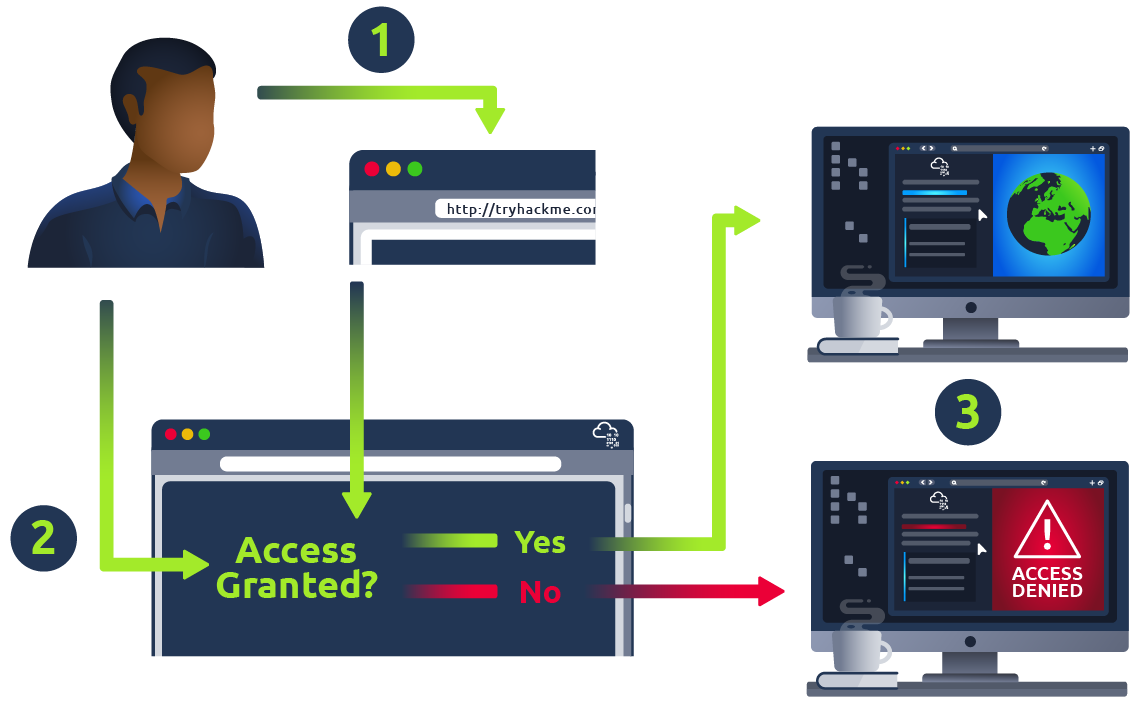
Access control can be implemented in different ways, depending on the type of resource being protected and the security requirements of the system. Some common access control mechanisms include:
Discretionary Access Control (DAC): In this type of access control, the resource owner or administrator determines who is allowed to access a resource and what actions they are allowed to perform. DAC is commonly used in operating systems and file systems. In layman’s terms, imagine a castle where the king can give keys to his advisors, allowing them to open any doors they like, whenever they want. That’s DAC for you. It’s the liberty to control access to your own resources. The one in charge, like the king of the castle, can hand out permissions to whomever they please, dictating who can come in and out.
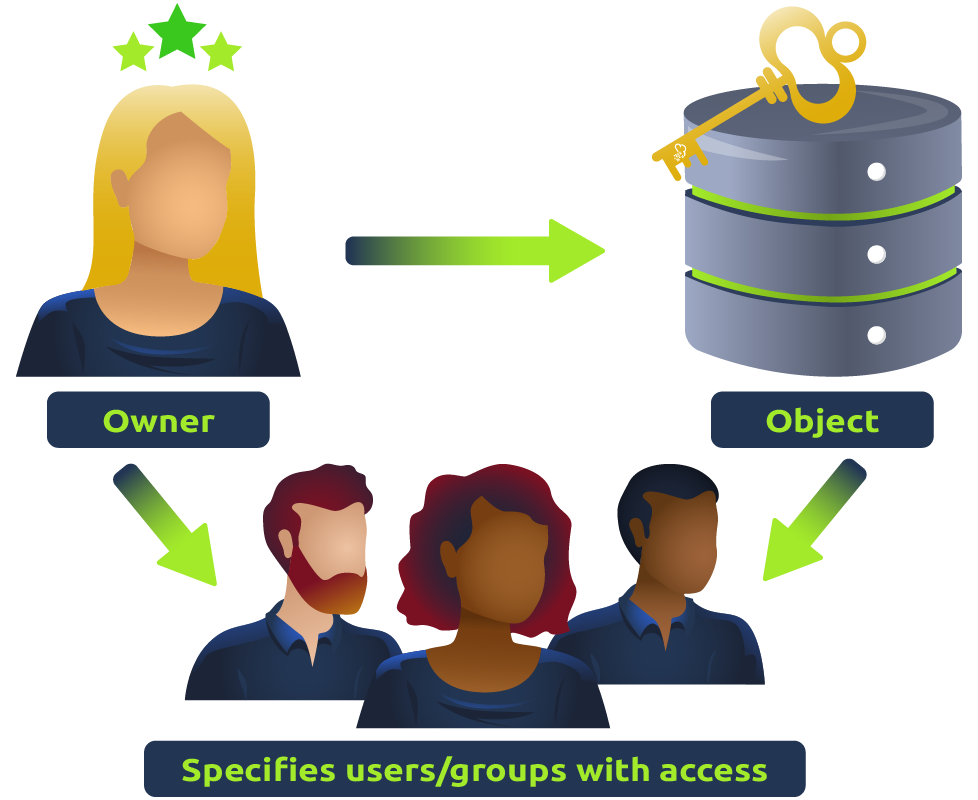
Mandatory Access Control (MAC): In this type of access control, access to resources is determined by a set of predefined rules or policies that are enforced by the system. MAC is commonly used in highly secure environments, such as government and military systems. In layman’s terms, picture a fort with an iron-clad security protocol. Only specific individuals with particular security clearances can access certain areas, and this is non-negotiable. The high commander sets the rules, and they are rigorously followed. That’s how MAC works. It’s like the stern security officer who allows no exceptions to the rule.

Role-Based Access Control (RBAC): In this type of access control, users are assigned roles that define their level of access to resources. RBAC is commonly used in enterprise systems, where users have different levels of authority based on their job responsibilities. In layman’s terms, imagine a modern corporation. You have your managers, your executives, your sales staff, etc. They each have different access to the building. Some can enter the boardroom, others can access the sales floor, and so on. That’s the essence of RBAC - assigning access based on a person’s role within an organization.
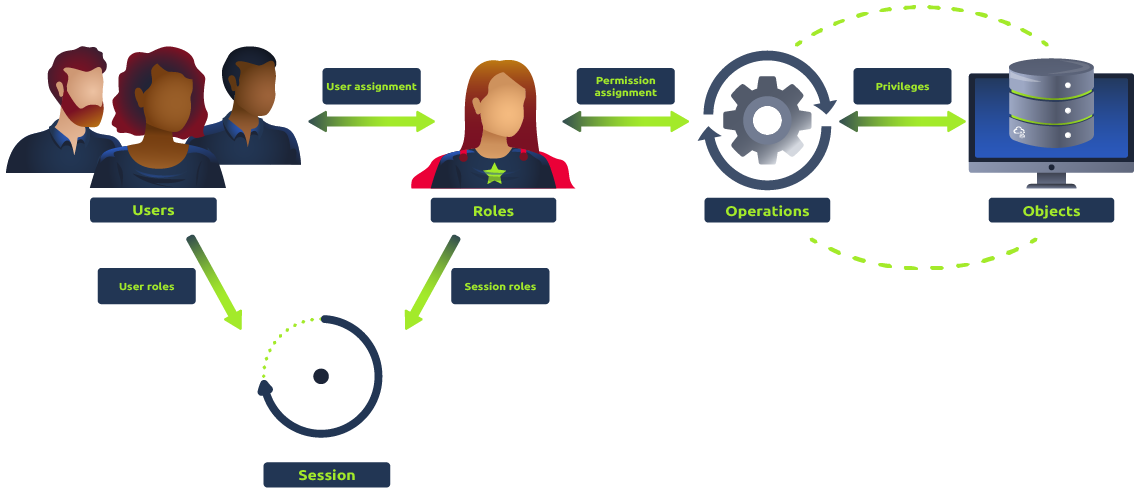
Attribute-Based Access Control (ABAC): In this type of access control, access to resources is determined by a set of attributes, such as user role, time of day, location, and device. ABAC is commonly used in cloud environments and web applications. In layman’s terms, think of a highly advanced sci-fi security system that scans individuals for certain attributes. Maybe it checks whether they’re from a particular planet, whether they’re carrying a specific device, or if they’re trying to access a resource at a specific time. That’s ABAC. It’s like the smart, flexible security of the future.

Implementing access control can help prevent security breaches and unauthorized access to sensitive data. However, access control is not foolproof and can be vulnerable to various types of attacks, such as privilege escalation and broken access control vulnerabilities. Therefore, it is important to regularly review and test access control mechanisms to ensure that they are working as intended.
Broken Access Control:
Broken access control vulnerabilities refer to situations where access control mechanisms fail to enforce proper restrictions on user access to resources or data. Here are some common exploits for broken access control and examples:
Horizontal privilege escalation occurs when an attacker can access resources or data belonging to other users with the same level of access. For example, a user might be able to access another user’s account by changing the user ID in the URL.
Vertical privilege escalation occurs when an attacker can access resources or data belonging to users with higher access levels. For example, a regular user can access administrative functions by manipulating a hidden form field or URL parameter.
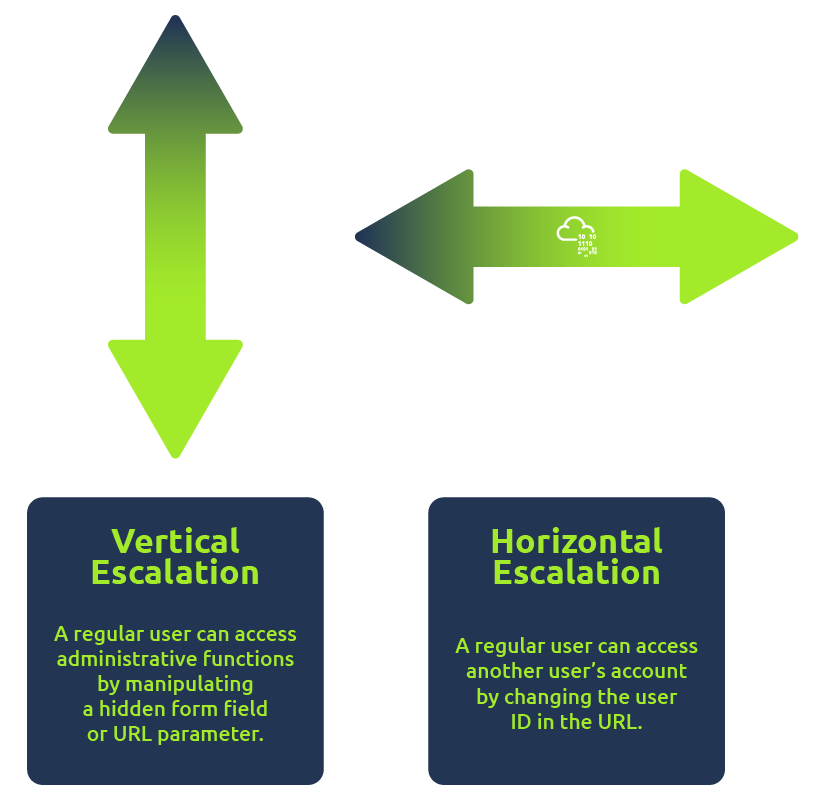
Insufficient access control checks occur when access control checks are not performed correctly or consistently, allowing an attacker to bypass them. For example, an application might allow users to view sensitive data without verifying their proper permissions.
Insecure direct object references occur when an attacker can access a resource or data by exploiting a weakness in the application’s access control mechanisms. For example, an application might use predictable or easily guessable identifiers for sensitive data, making it easier for an attacker to access. You may refer to this room in Task #4 to learn more about this.
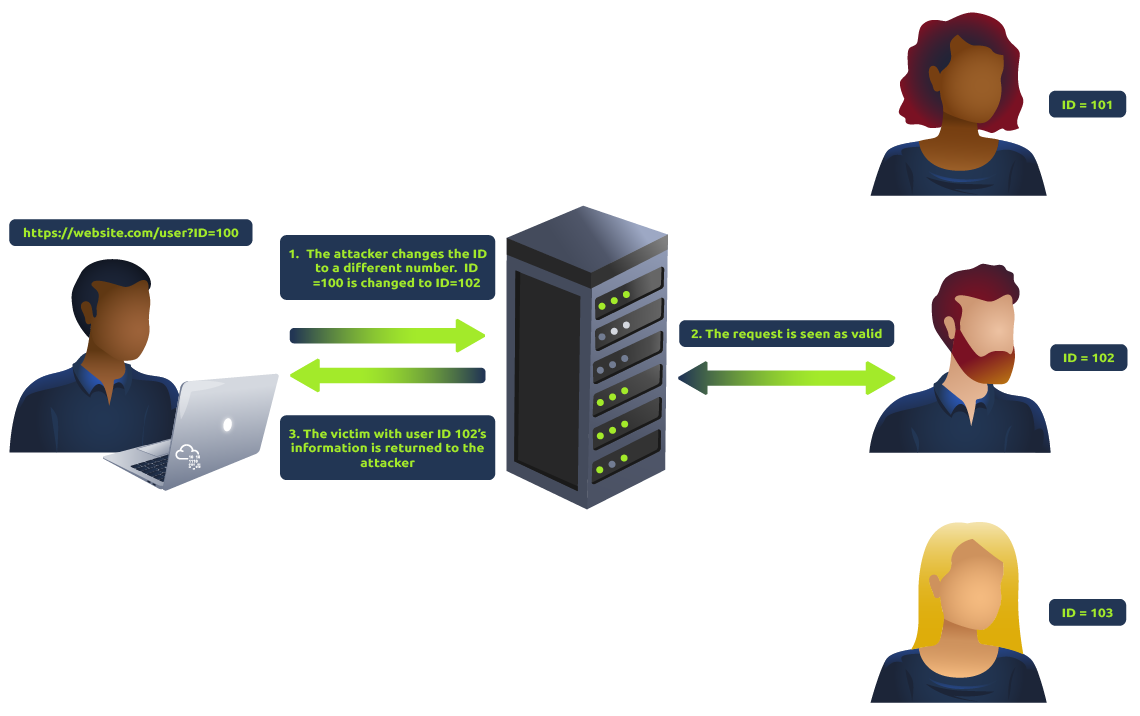
These exploits can be prevented by implementing strong access control mechanisms and regularly reviewing and testing them to ensure they are functioning as intended.
What occurs when an attacker can access resources or data belonging to other users with the same level of access?
What occurs when an attacker can access resources or data from users with higher access levels?
What is ABAC?
What is RBAC?
To focus on learning about the Broken Access Controls, please click
on the Start Machine button located in the upper-right-hand
corner of this task to deploy the virtual machine for this room.
After obtaining the machine’s generated IP address, you can either
use our AttackBox or use your own VM connected to TryHackMe’s VPN to
begin the attack. If you prefer to use the AttackBox, you can simply
click on the Start AttackBox button located above the room
name.
After starting the AttackBox or connecting your attack VM to TryHackMe’s VPN, you can now start accessing the target website application by entering http://MACHINE_IP/ into the browser.

Keep in mind that the machine may take up to 5 minutes to spawn.
Learning Objective:
In this task, our objective is to gain a comprehensive understanding of the web application’s functionalities. This will allow us to make the most of the application’s capabilities and achieve our desired outcomes.
Assessing the Application:
When you browse a web application as a penetration tester, imagine what the underlying code looks like and what vulnerabilities come to mind for each functionality, request, and response.
The web application for this room features a Dashboard, Login, and Registration form that enables users to access the dashboard of the website. From a web app pentester standpoint, the pentester will usually register an account. After the registration, the pentester will then try to check the login function for any access control vulnerabilities.
Below are the screenshots of each webpage:
Registration:
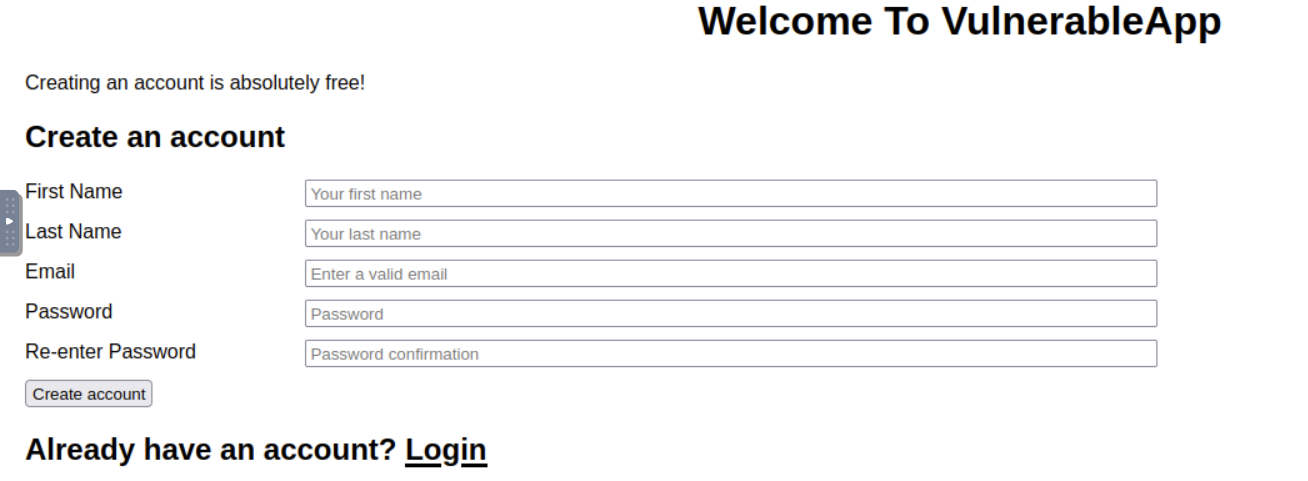
Login:

Dashboard:
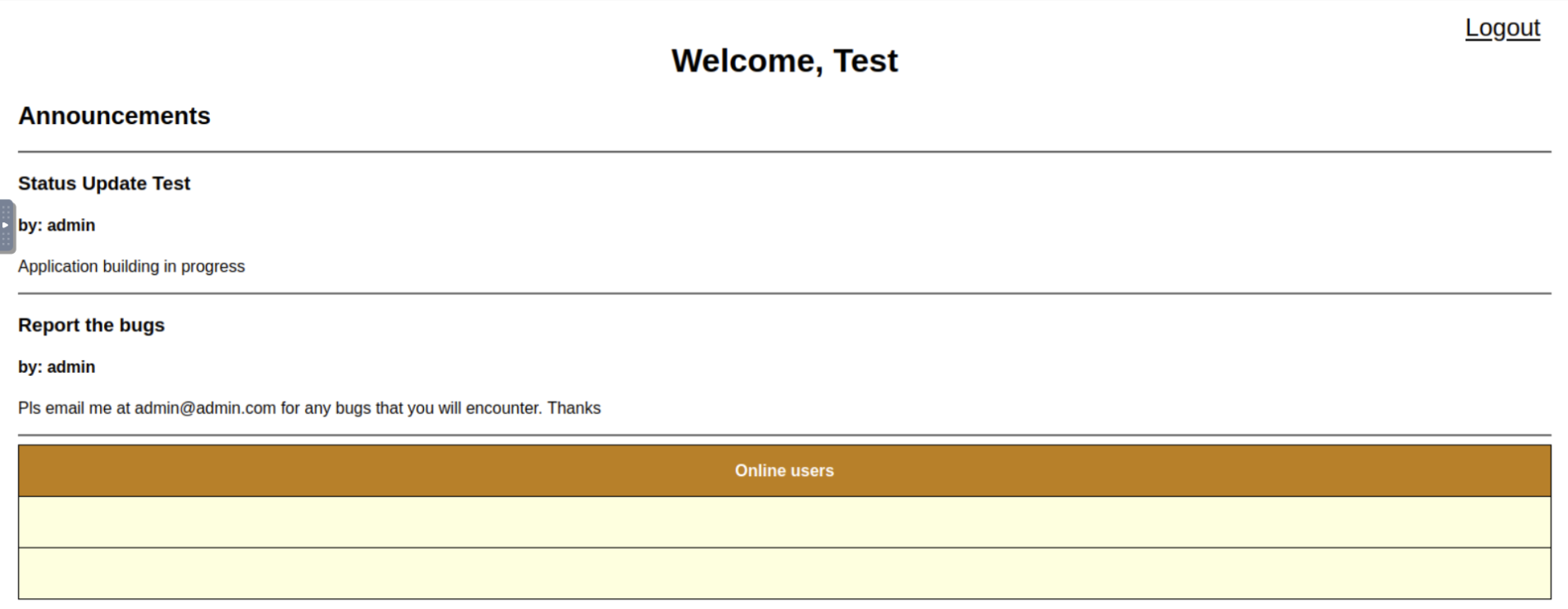
In order for us to capture the HTTP requests being sent to the server, we can use OWASP ZAP or Burp Suite Community Edition.
To learn more about the detailed usage of Burp Suite and its functionalities, you may refer to the Burp Suite Module.
Capturing the HTTP traffic
In order for us to further analyze the requests and responses being sent and received from the server, we will use the “Proxy” module of Burp Suite to capture the HTTP traffic that is being sent to the server. The captured HTTP traffic can be used with the other modules of Burp Suite.
These can then be manipulated or sent to other tools, such as “Repeater”, for further processing before being allowed to continue to their destination.
Below is the captured HTTP traffic that is being sent to
functions.php after login.

Based on the screenshot displayed above, we can observe that upon
completing the login process, the web application will give us a JSON
response that contains the status, message, first_name, last_name,
is_admin, and redirect_link which the server uses to redirect the user
to the dashboard.php with the parameter “isadmin” in the
URL.
Understanding the content of the HTTP request and response:
- The target web application does not have any implemented security headers, which indicates that there are no preventative measures (like a first line of defense) in place to protect the web application against certain types of attacks.
- The target web application is running on a Linux operating system
(
Debian) and is using Apache web server (Apache/2.4.38). This information can be useful in identifying potential security vulnerabilities that may exist in the target web application. - The target web application utilizes
PHP/8.0.19as its backend programming language. This information is important for understanding the technology stack of the application and identifying potential security vulnerabilities or compatibility issues that may arise with other software components. - The target web application redirects the user to the dashboard with a parameter that we can possibly test for privilege escalation vulnerabilities.
What is the name of the parameter in the JSON response from the login request that contains a redirect link?
What Burp Suite module allows us to capture requests and responses between ourselves and our target?
What is the admin’s email that can be found in the online users’ table?
In the previous task, we learned that the file
functions.php returns a JSON response upon login. The
response contains a redirect_link with a parameter that
we can test for access control vulnerabilities.
To start testing for this vulnerability, we can intercept the HTTP response and copy the value of the redirect_link parameter to our address bar.
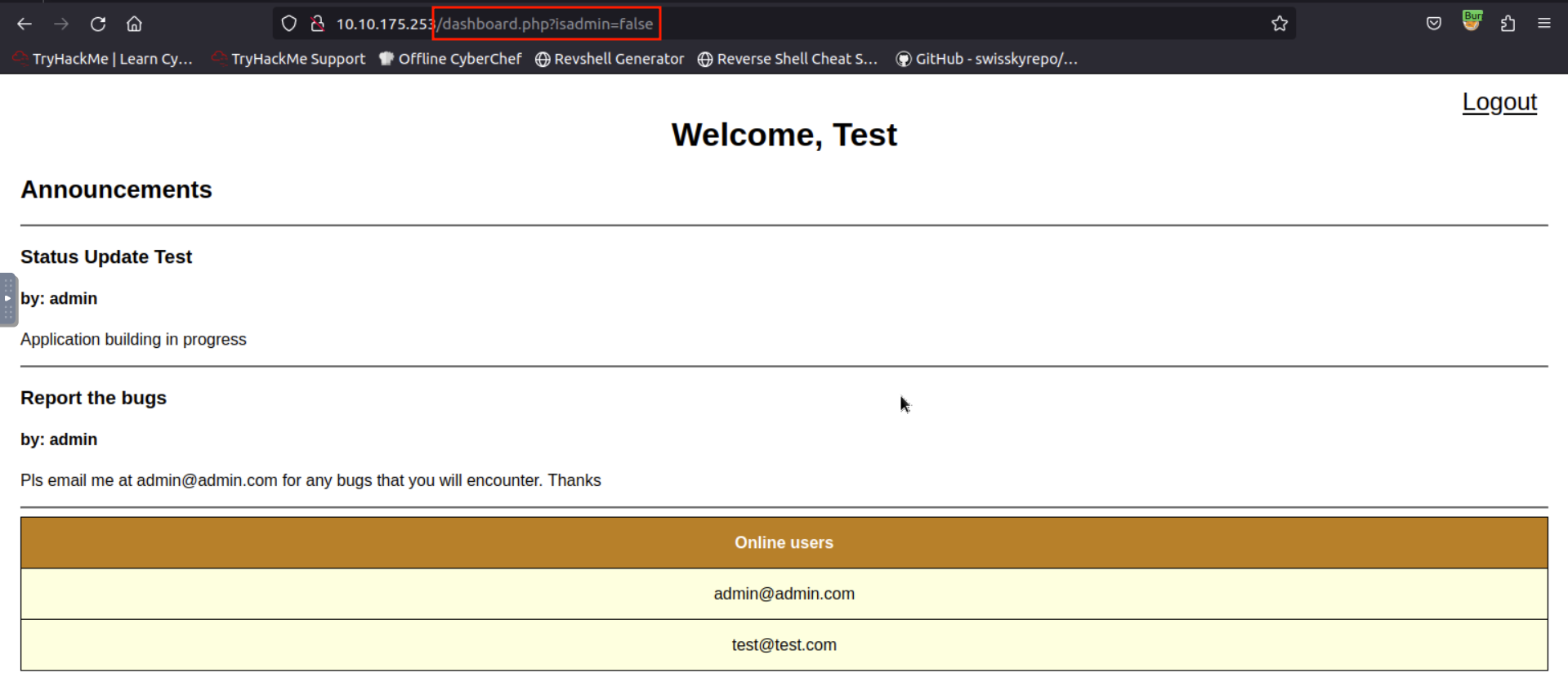
Since the application redirects the user to dashboard.php while the JSON response can only be seen by intercepting using a proxy tool, we can try changing the parameter’s value from “false” to “true” or vice versa.
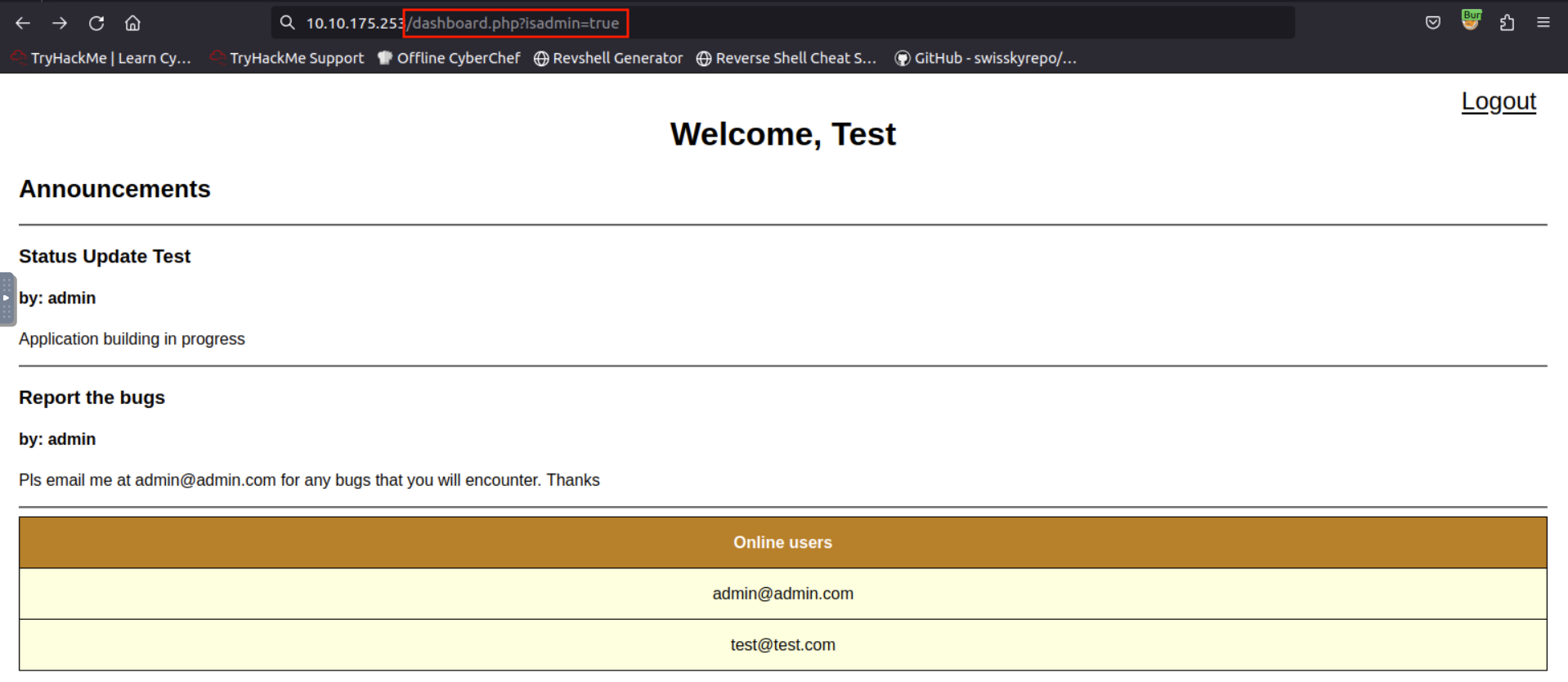
Upon changing the value from false
to true, application redirects us to admin.php, which is hidden to a normal user by default.
Below is the HTTP request that is captured using Burp Suite Proxy.
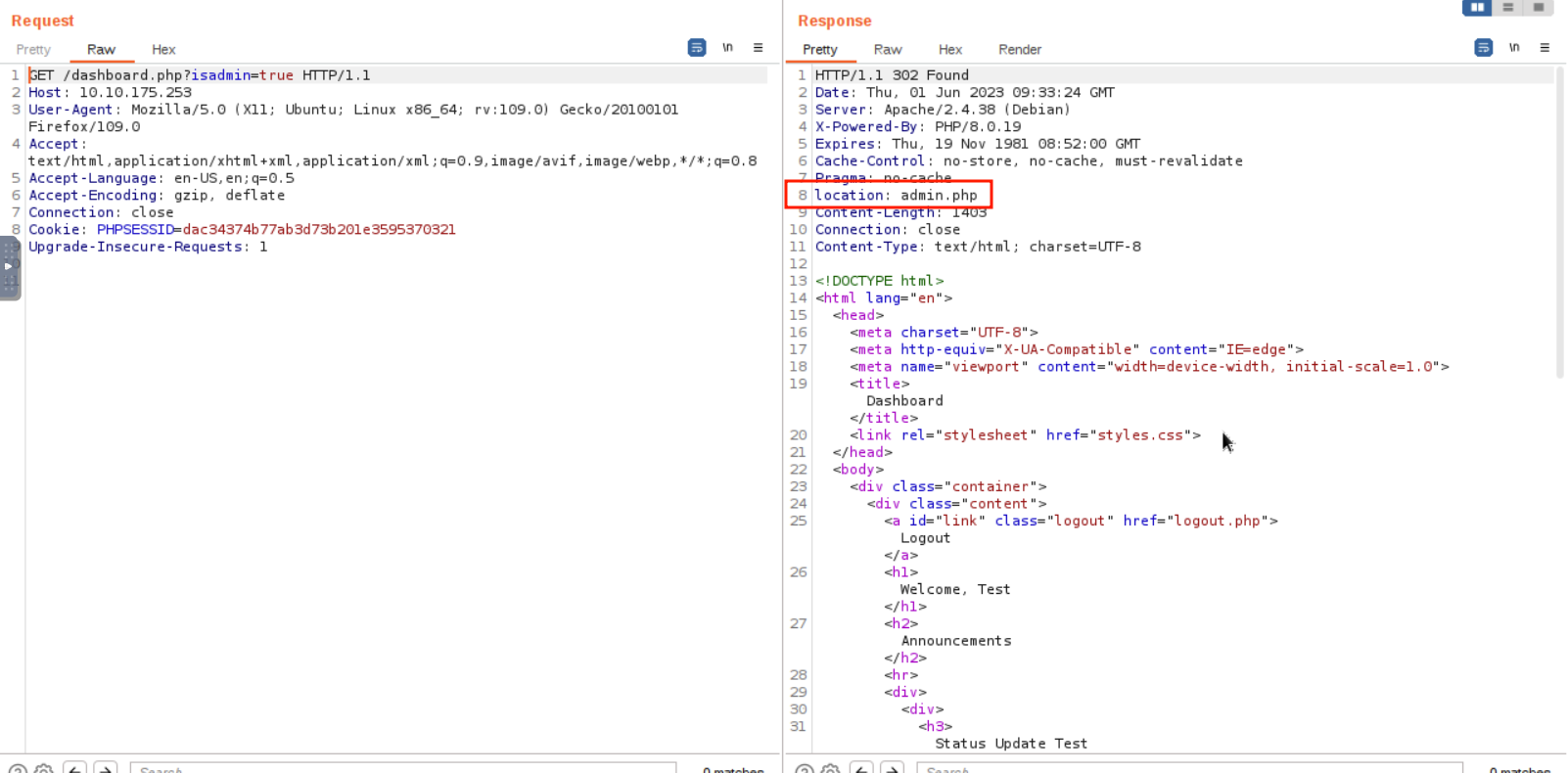

Since we have access to admin.php using a low-privilege account, we might as well check for a vertical privilege escalation attack.
Checking the box in the “Admin access” column of the account you registered and clicking the “Save Changes” button will give us admin privileges. Which in return enables us to revoke the access of other admin users.

What parameter allows the attacker to access the admin page?
What is the flag in the admin page?
There are several steps that can be taken to mitigate the risk of broken access control vulnerabilities in PHP applications:
Implement Role-Based Access Control (RBAC): Role-based access control (RBAC) is a method of regulating access to computer or network resources based on the roles of individual users within an enterprise. By defining roles in an organization and assigning access rights to these roles, you can control what actions a user can perform on a system. The provided code snippet illustrates how you can define roles (such as ‘admin’, ‘editor’, or ‘user’) and the permissions associated with them. The
hasPermissionfunction checks if a user of a certain role has a specified permission.Sample Code// Define roles and permissions $roles = [ 'admin' => ['create', 'read', 'update', 'delete'], 'editor' => ['create', 'read', 'update'], 'user' => ['read'], ]; // Check user permissions function hasPermission($userRole, $requiredPermission) { global $roles; return in_array($requiredPermission, $roles[$userRole]); } // Example usage if (hasPermission('admin', 'delete')) { // Allow delete operation } else { // Deny delete operation }Use Parameterized Queries: Parameterized queries are a way to protect PHP applications from SQL Injection attacks, where malicious users could potentially gain unauthorized access to your database. By using placeholders instead of directly including user input into the SQL query, you can significantly reduce the risk of SQL Injection attacks. The provided example demonstrates how a query can be made secure using prepared statements, which separates SQL syntax from data and handles user input safely.
Sample Code// Example of vulnerable query $username = $_POST['username']; $password = $_POST['password']; $query = "SELECT * FROM users WHERE username='$username' AND password='$password'"; // Example of secure query using prepared statements $username = $_POST['username']; $password = $_POST['password']; $stmt = $pdo->prepare("SELECT * FROM users WHERE username=? AND password=?"); $stmt->execute([$username, $password]); $user = $stmt->fetch();Proper Session Management: Proper session management ensures that authenticated users have timely and appropriate access to resources, thereby reducing the risk of unauthorized access to sensitive information. Session management includes using secure cookies, setting session timeouts, and limiting the number of active sessions a user can have. The code snippet shows how to initialize a session, set session variables and check for session validity by looking at the last activity time.
Sample Code// Start session session_start(); // Set session variables $_SESSION['user_id'] = $user_id; $_SESSION['last_activity'] = time(); // Check if session is still valid if (isset($_SESSION['last_activity']) && (time() - $_SESSION['last_activity'] > 1800)) { // Session has expired session_unset(); session_destroy(); }Use Secure Coding Practices: Secure coding practices involve methods to prevent the introduction of security vulnerabilities. Developers should sanitize and validate user input to prevent malicious data from causing harm and avoid using insecure functions or libraries. The given example shows how to sanitize user input using PHP’s
filter_inputfunction and demonstrates how to securely hash a password usingpassword_hashinstead of an insecure function likemd5.Sample Code// Validate user input $username = filter_input(INPUT_POST, 'username', FILTER_SANITIZE_STRING); $password = filter_input(INPUT_POST, 'password', FILTER_SANITIZE_STRING); // Avoid insecure functions // Example of vulnerable code using md5 $password = md5($password); // Example of secure code using password_hash $password = password_hash($password, PASSWORD_DEFAULT);
Broken access control is a security vulnerability that occurs when a system fails to properly enforce access controls, which can result in unauthorized users gaining access to sensitive information or performing actions they are not authorized to do.
Horizontal privilege escalation occurs when a user is able to access data or perform actions that they are not authorized to do within their own privilege level. This can be dangerous because it can allow an attacker who has already gained access to the system to move laterally through the network and access additional resources or sensitive data.
Vertical privilege escalation occurs when a user is able to gain access to data or perform actions that are reserved for users with higher privilege levels, such as system administrators. This can be even more dangerous because it can allow an attacker to gain full control of the system and potentially take over the entire network.
The impact of these types of privilege escalation can vary depending on the specific system and the level of access that is gained. However, in general, the consequences can include unauthorized access to sensitive information, data loss or theft, disruption of critical systems or services, and even complete network compromise. Therefore, it is important to implement strong access controls and regularly monitor for any signs of unauthorized access or activity.
Here are some references that you can give to PHP developers to help them implement these mitigation strategies:
Ready to learn Cyber Security? Create your free account today!
TryHackMe provides free online cyber security training to secure jobs & upskill through a fun, interactive learning environment.
Already have an account? Log in

